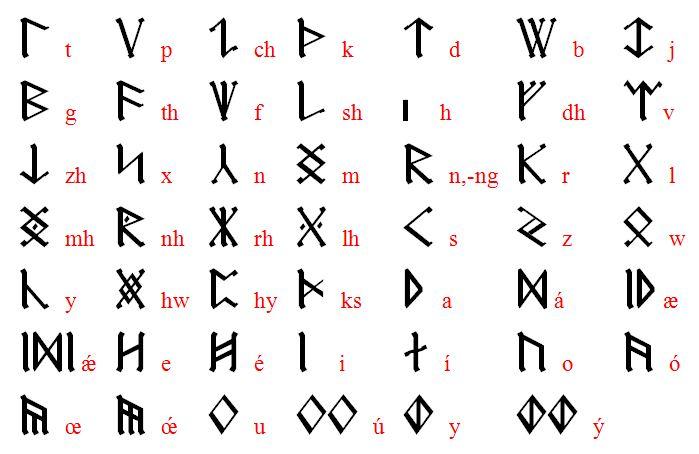“The Cirth script was invented by the philologist and author J. R. R. Tolkien as part of the mythological world he created and was widely popularized through his work, The Lord of the Rings, The Silmarillion, etc. Along with a family of artificial languages and a large corpus of etymological data describing their relationships, the Cirth script has attracted the attention of a large community of linguists and other enthusiasts interested in this expression of Tolkien's expertise in historical and comparative linguistics. It can be categorized as a Category D (Attested Extinct) alphabet: there is a relatively limited corpus, and a relatively small (but existent) scholarly body studying it. In order to set a standard Cirth character coding for such scholars and enthusiasts, it has been suggested that this character set be included into the Unicode standard and ISO 10646.
8 columns are reserved to encode the Cirth. The last column is currently unused, and is reserved for future discoveries in the Tolkien manuscripts. The Cirth was and is used to write the languages Quenya, Sindarin, and Khuzdul. It has also been used to write English, as on the title page of The Lord Of The Rings.“ - Everson, Michael, Proposal to encode Cirth in Plane 1 of ISO/IEC 10646-2, 1997

